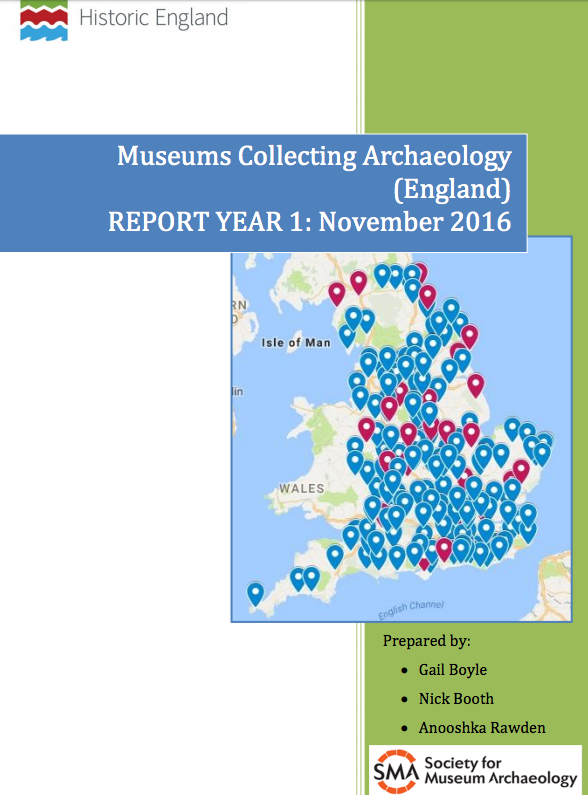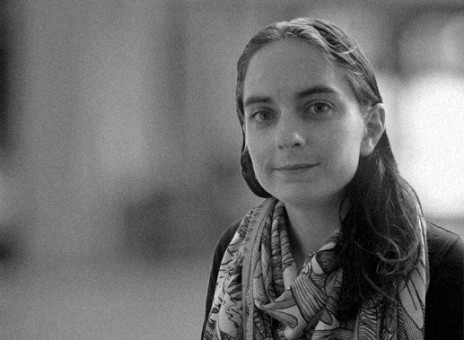The end of plenty? Museums collecting archaeology
Q2…If lack of space is forcing museums to stop collecting, should capacity to collect be factored into #accreditation? #museumhour
— museumhour (@museumhour) March 13, 2017
‘We no longer exist in the age of plenty’ exclaimed a tweet on a recent #museumhour discussion hosted by the Society for Museum Archaeology (SMA) (@SocMusArch). Responding to the question above posted by @museumhour, this tweet responded emphatically ‘yes’. It would be ‘irresponsible 2 [sic] do otherwise’ because ‘we no longer exist in the age of #plenty’.
The perception that museums operate in a time defined, on the one hand, by an abundance of collections and, on the other, a scarcity or dwindling of other kinds of things (funding, infrastructure, and personnel) is widespread. It characterised this twitter-feed, which was generated in response to a series of questions posed by @museumhour drawing on findings recently-published in the SMA Museums Collecting Archaeology report (November 2016).
Museums Collecting Archaeology is the first of three annual reports commissioned by Historic England to monitor over time the ‘challenges that museums collecting archaeology are facing’ (2016: 1). Along with other current UK-based initiatives (e.g., the MA funding cut surveys, or the Art Fund curators survey), gathering survey evidence appears aimed towards illustrating the impacts of austerity on museum collecting. The report is based on survey-responses from 200 English museums. It found that some museums who were previously collecting archaeology have stopped (22.7%). Lack of space is the most cited reason by these respondents (91.4%), followed by shortage of expertise and staff resources (51.4%). More than half of the responding museums who are still actively collecting archaeology charge for deposition (54.6%).
Informed by these findings, on the 13th of March 2017, @museumhour tweeted a series of questions addressing issues of staff and expertise loss, limited or declining storage, and funding shortfall. Lively (and at times difficult to keep pace with!) discussion emerged. Concern about the future of collecting characterised the #museumhour feed; as was explicitly addressed through the opening question:
Q1 Just over 22% #museums previously collecting #archaeology have stopped. How do we future proof collecting? #museumhour
— museumhour (@museumhour) March 13, 2017
Various responses suggested the need for more selective acquisitions policies, the use of disposal, and better identifying potential use of archaeology collections (e.g., for ‘display’, ‘research’, or ‘learning’). The challenge of cultivating and retaining collections knowledge and expertise was also raised, with several tweets stressing that such knowledge is needed for making informed decisions about collecting-futures. In labour markets where short-term contracts are increasingly the norm, and museum posts responsible for archaeology collections have been reduced (as illustrated by the SMA report), discussion seemed to suggest that it is collections knowledge – as much as collections themselves – perceived at risk of endangerment. Of course, whose and what kind of knowledge ‘counts’ is open to debate. Threads discussed the importance of engaging with people beyond the museum to generate new ways of knowing about collections. Yet also debated the role of expertise focused on ‘context or understanding of objects’. This was pithily summarised in one tweet as needing to balance ‘reaction’ to with ‘identification’ of collections:
@gabbyheffernan @RegistrarTrek @TarynMorgana @CharlotteVic18 nope I think equally important. Reaction is equal to identification #museumhour
— Sam Elliott (@SamElliott1) March 13, 2017

While tweets raised concern about the long-term future of museums collecting archaeology, enthusiasm for generating creative response to collecting challenges was also expressed; perhaps reflecting the kind of ‘pragmatic utopianism’ we have discussed elsewhere (Macdonald and Morgan, forthcoming). For example, many tweets suggested looking beyond the museum domain for new ideas and practices – one proposed that collections expertise could be shared through a ‘swap shop’ format, while another contemplated whether an ‘adopt an artifact’ programme could be usefully ‘translated to storage’ to attract funding to support storage projects.
The need to adapt museum storage for more sustainable futures emerged across several threads. Mostly in response to the question:
Q7 How can we make storage projects 'sexy' to funders? How can the pressing need for new/more storage attract funded support? #museumhour
— museumhour (@museumhour) March 13, 2017
Discussion suggested that ‘shared storage’,‘open stores’, ‘storeroom tours’, or using the store to host ‘events’ are especially effective ways to facilitate access to and engagement with stored collections (and thus more attractive to funders). There seemed agreement that such initiatives, which seek to open up the storeroom and to explain what they do, can help change perceptions of museum storerooms as holding redundant collections (or ‘stuff on shelves’ or even ‘hoards’):
@lucy_etc @museumhour showing explaining to stakeholders what stores are about does help break perceptions of 'hoarding' #museumhour
— James Daly (@dalyhistory) March 13, 2017
Yet, not everyone agreed that such initiatives would resolve issues, and difficulties for implementing (including different scales of institution and openness to networked approaches) were highlighted. Discussion seemed to indicate a move towards the blurring of spatial and conceptual boundaries between storerooms and displays – with, it might be proposed, storerooms functioning more like curated displays, and displays (especially those that are object dense) more like curated stores:
Are stores becoming curated displays, & displays curated stores? Blurring categories? Musing on #profusion @Future_Heritage https://t.co/lxlmwhBM5R
— Jennie Morgan (@DrJennie_Morgan) March 14, 2017
This #museumhour illuminated many of the perceived challenges for the future of museums collecting archaeology. And offered some partial solutions. It also illustrated that the ‘crisis’ (as it is so often called) of full storerooms and loss of expertise is not limited to one kind of collection or national context. The discussion was, as @museumhour tweeted, ‘A good reminder that the issue is bigger than simply archaeology. These issues are important to all museums and collections’. However, diverging from perspectives expressed through the #museumhour, it may also be argued that these kinds of challenge (which we research through the Profusion theme) should not only be understood through an economistic lens. It is important to ask questions like:
Q5 Should preservation of #archaeological #archives be compulsory? Developers generate archives, museums preserve them-who pays? #museumhour
— museumhour (@museumhour) March 13, 2017
Preserving collections into the future does, of course, come with very real costs (as highlighted through this #museumhour). Yet the Profusion struggle is not only a quantities issue of there being more and more things, and less and less money, space, and people to direct into its care. Such challenges are also partly driven by a ‘relativism’ of value or seeing significance in an increasing range of things (Macdonald and Morgan, forthcoming). Addressing the future of museum collecting requires grappling not only (as this #museumhour attempted to do) with the very real resource-cost implications of collections, but being open to engaging with these challenges through different lenses; including, as we seek to do in Heritage Futures, those beyond the purely economic.
Macdonald, S. and J. Morgan (forthcoming). ‘What not to collect? Post-connoisseurial dystopia and the profusion of things’. In: P. Schorch and C. McCarthy (eds) Curatopia: Museums and the Future of Curatorship (Manchester: Manchester University Press).
The discussion was, as @museumhour tweeted, ‘A good reminder that the issue is bigger than simply archaeology. These issues are important to all museums and collections’.
